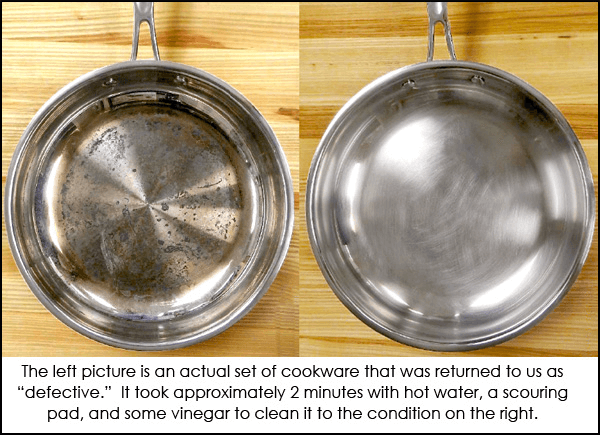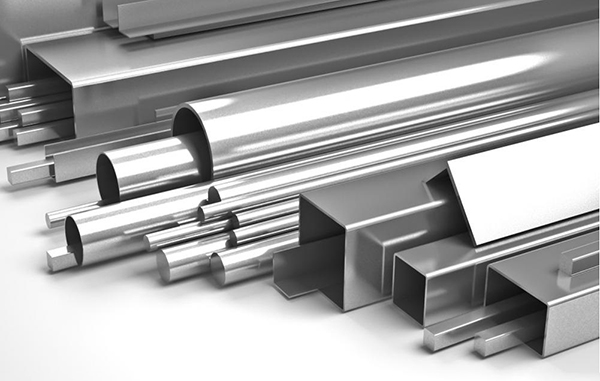
Unlike other metals, stainless steel is known for its polished and immaculate look. It has a high aesthetic value. This explains why it is used in those applications where looks matter. But, does stainless steel tarnish?
To tarnish means that the material loses its luster, especially when exposed to moisture. So does stainless steel tarnish over time?
The short answer is Yes. The once shiny and attractive stainless steel will start appearing dull and gloomy. It will lose its original luster.
Just because the stainless steel is resistant to rust and corrosion does not mean that it is fully protected. Continuous exposure to moisture will eventually degrade its appearance.
The good news is there is a caveat to this; Compared to other metals, stainless steel does not tarnish hat easily. It will provide some level of resistance before it eventually tarnishes with time.
Perhaps this explains why stainless steel jewelry seems to be durable. They tend to retain their looks for long despite being exposed to moisture. The same applies to the construction industry, where stainless steel is used for supporting massive structures.
Contents
Does the Type of Stainless Steel Matter?
When it comes to tarnishing, the type of stainless steel that is used matters. This is because some type of steel can be affected severely by the tarnishing process while others will be least affected.
The differences are mainly because of the levels of elements that make up the stainless steel. These minerals include manganese, chromium, carbon, and iron.
Products that are made of 316L steel contain high amounts of iron, chromium, nickel, manganese, and carbon. This steel is likely to tarnish faster than the 304L stainless steel type with relatively higher levels of nickel mineral.
From the differences, you will be able to choose the right steel depending on the environment.
Why Does the Stainless Steel Tarnish?
Chances are you might have been hyped by the strength and tenacity of the stainless steel. So, why does it tarnish like any other material?
The answer is pretty simple. Nothing is indestructible regardless of how strong it is. As long as it is exposed to unfavorable conditions over a long time, you should be ready to see changes on its surface.
In this context, the harsh conditions are moisture and other chemicals.
Apart from the type of stainless steel that is used, the varying external conditions can also affect the rate at which the stainless steel rusts or tarnishes.
For instance, areas with high levels of humidity are generally expected to experience an accelerated level of steel tarnishing. This is generally because the atmosphere has high water content.
Why doesn’t the stainless steel rust?
Although it may tarnish, stainless steel does not rust so easily. Of course, there are several reasons for this.
One of the reasons is the power of the chromium. These elements provide overall protection against the effect of rust. It achieves this goal by preventing oxidation from taking place on the surface of the metal. Oxidation takes place when oxygen reacts with the metal top form a layer of rust.
Apart from chromium, another factor that prevents rust from forming on the stainless steel is the presence of a protective film.
How to Clean Stainless Steel When Scratched?
It is imperative to note that scratching stainless steel will expose it to elements such as water. The elements can easily make it tarnish.
Also, the scratches on the surface of the steel will degrade the overall outlook of this metal. The scratched spot will appear like it has been tarnished.
The good news is you can easily clean scratched stainless steel and restore its original luster.
There are several methods of cleaning stainless steel among them is;
Using soap and water
This is one of the easiest methods of restoring the looks of stainless steel. All you need is some water and dishwashing soap.
Dip a soft cloth into the soapy water and use it to wipe on the surface of the stainless steel. You can use a brush to remove the extra grime from the steel.
Dip the piece of cloth into clean water and rinse the surface of the stainless steel metal. Dry the surface using another dry piece of cloth.
You can polish the stainless steel metal if necessary.
Using baking soda to clean the stainless steel
Alternatively, you can use the baking soda to clean the surface of the stainless steel metal.
Start by mixing the baking soda and water thoroughly until they form a thick paste.
You can then dip a brush into this paste and scrub it on the stainless steel metal.
Rinse the cleaned surface using warm water and take note of the difference.
You will notice the steel will look shiner and would have regained its original luster.
It is usually advisable to use a silica-free toothpaste as an alternative to the baking soda.
Ultrasonic cleaning of stainless steel
This is the most preferred cleaning method for tarnished stainless steel. It is known for leaving a long-lasting impact on the metal surface.
Ultrasonic cleaning entails using continuous vibrations to clean the metal surface.
It is an ideal solution for the complex steel structures whose parts are hard to reach.
The major downside of this method is cost. It is relatively costlier than the previous two methods.
Conclusion
Even though stainless steel is non-corrosive and resistant to rust, it can tarnish when exposed to harsh environments or even when its surface is scratched. This means that as much as you may fully trust the desirable qualities of stainless steel, you still need to take extra precautions.
Despite being susceptible to tarnish, you can still restore the original luster and looks of this steel. So, you can still be confident the stainless steel won’t fail you in performing its task.
For more information about stainless steel tarnishing and how to manage it, don’t hesitate to contact Roche Industry. We will be more than glad to feed you with any relevant information.
Related source link:
Is stainless steel magnetic? And why?
Rocheindustry specializes in high quality rapid prototyping, rapid low-volume manufacturing and high-volume production. The services of rapid prototype we providing are professional Engineering, CNC Machining including CNC Milling and Turning, Sheet Metal Fabrication or Sheet Metal Prototyping, Die casting, metal stamping, Vacuum Casting, 3D printing, SLA, Plastic and Aluminum Extrusion Prototyping, Rapid Tooling, Rapid Injection Moulding, Surface Treatment finish services and other rapid prototyping China services please contact us now.


